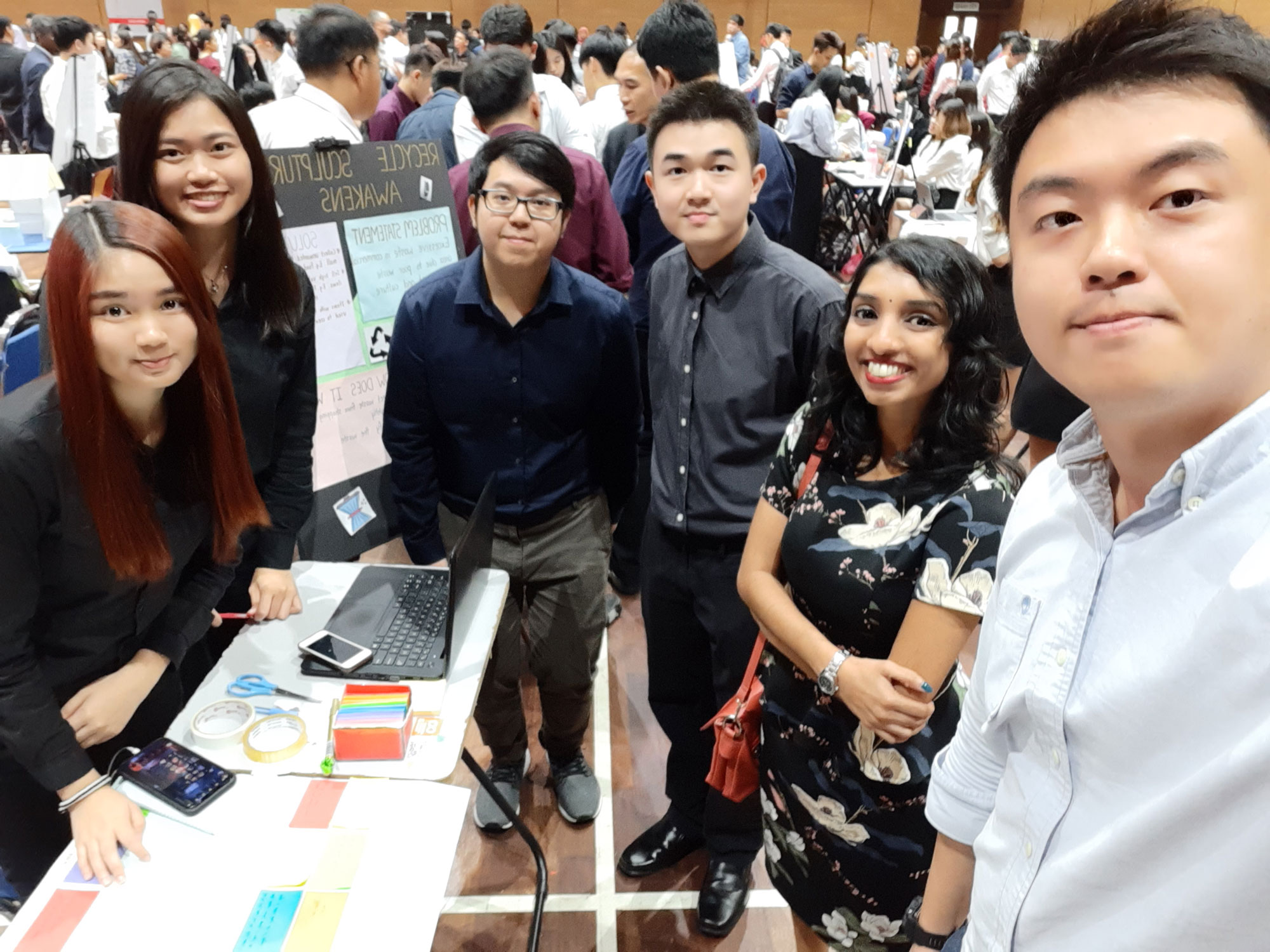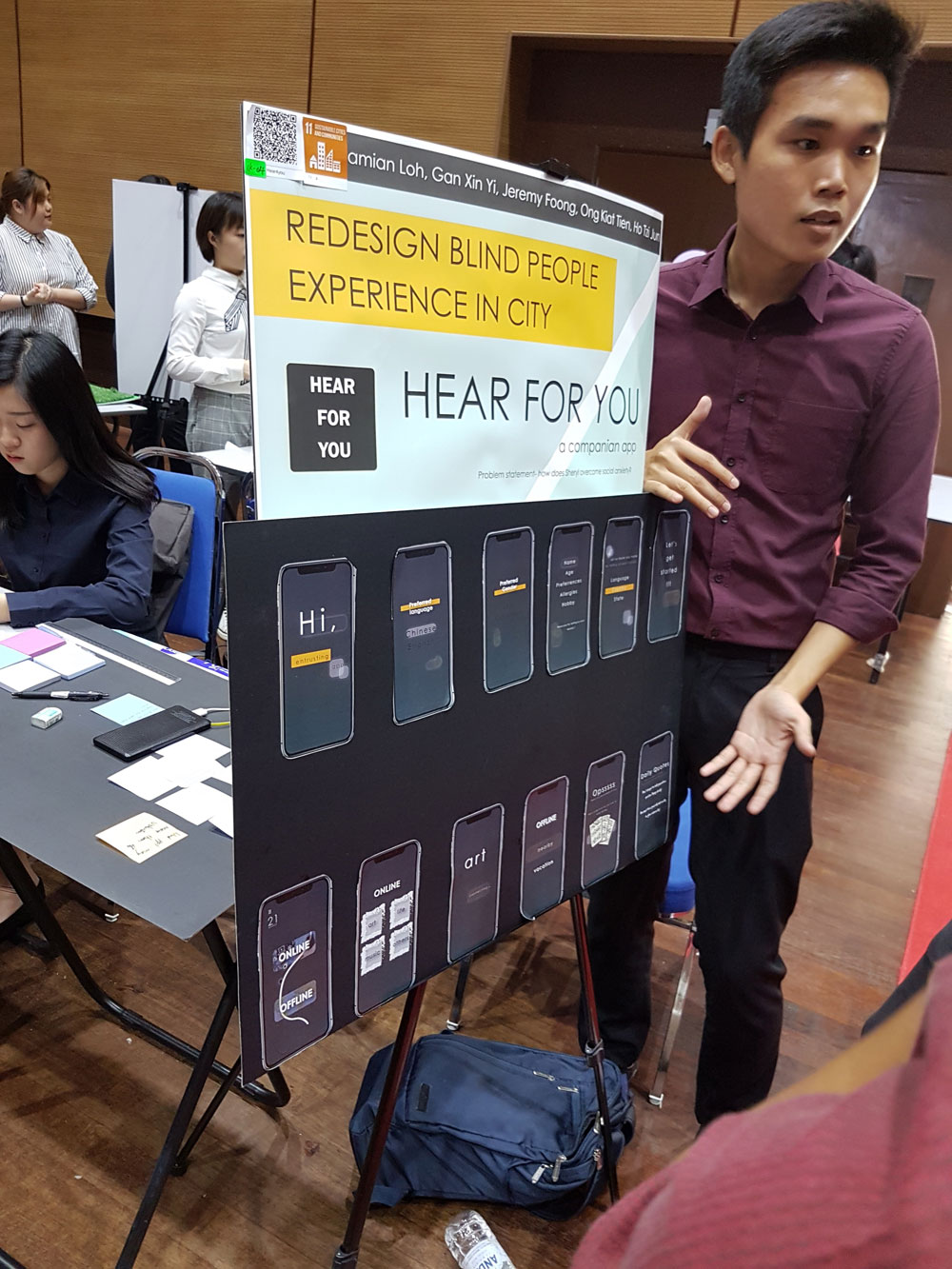By:
Menaga Vesudevan
Lecturer, Design Thinking at the Centre of Liberal Arts & Languages,
INTI International University.
With increasing concerns about unemployment and the long term realities of the job market post MCO, there is an urgency to address the expectations on fresh graduates. With almost all industries now freezing and reducing headcounts, enhancing the skillsets and capabilities of graduates to stand out in an employer’s market must become a top priority for educators.

Menaga Vesudeven, 2nd from right, with students undertaking INTI’s Design Thinking module.
The general idea behind any design thinking course is to expand the creativity and critical thought process of students in their studies and develop these highly sought after skillsets. Design thinking requires students to develop practical and innovative solutions to real business or socio-political issues.
A well-developed design thinking course is human-focused, prototype-driven, and inculcates skills throughout the programme. It enables students to immerse themselves into the realities impacting organisations and societies at large, and when paired with global issues such as those emphasized by the United Nations Sustainable Development Goals (SDGs), offers a holistic learning experience.
Leveraging the SDG’s as part of the design thinking module at INTI has helped to facilitate greater awareness among students about economic, social and environmental challenges. These SDGs define global priorities into 2030 and give students an insight into how organisations, agencies and communities everywhere are responding to these challenges – which in a COVID-19 world have no doubt increased.
The design thinking process can be applied throughout the creation and innovation of products, services, systems, procedures, protocols and user experiences. Learning modules should cover a solid understanding of the design thinking process and teach students how to systematically extract, learn and apply human-centric techniques in solving problems innovatively.

An INTI student presents their prototype at the Design Thinking Poster Presentation Day.
Case studies and closer-to-home examples lend to the practicality of the course. For example, the Malaysian social enterprise known as Biji-Biji who initiate and promote sustainability through brainstorming sessions and bring those ideas to life is an inspiring study on developing solutions for sustainable living.
Broadly speaking a design thinking course must encompass the stages of discovering, defining, developing, delivering and iterating. Students begin by generating ideas and then pairing these with sustainable solutions. Working collaboratively as a team to identify the problems and conduct research broadens the amount of information gathered, facilitates discourse and brings together multiple perspectives when developing a solution.
The inclusion of lecturers, industry and alumni throughout this process helps guide conversations and addresses the suitability of ideas in a realistic scenario.
Once teams are formed, the first stage of this process is the discovering phase, where students research current issues such as those laid out by the SDGs. These research studies help students narrow down their focus to what they would like to find a solution for.
The following stage is the defining phase where students define an actionable problem statement and create a design challenge proposal. Students may also include specific communities they wish to support. At this stage, the focus is purely on getting students to gain a good grasp of the issues.
The developing phase is when awareness turns into actually solving the problem. In this phase, students will work towards a creative solution for the issues they have defined. At INTI, students are assigned to mentors from industry and alumni who work with them to connect their ideas more closely to business and socio-economic realities. These mentors also guide students to develop creative prototypes to address the problem they have identified.
The next phase is delivering, where students build their prototypes. Students can use applications or 3D models that provide an actual look and feel for their solution, and which focuses on demonstrating visual design, content and interactivity. With their prototype created, students will need to assess whether or not their solution / prototype has answered their problem statement.
Lastly, the final phase is iterating, where students present their ideas and their prototype before an audience – at INTI, this includes industry leaders, which creates a truly realistic and professional experience reflective of the workplace. Students collect feedback from their audience through a feedback grid, which helps them organize and improve on the product or service they have proposed, mimicking real customer feedback and design improvement.
At INTI, design thinking is one of the core subjects or matapelajaran umum that all undergraduate students take as part of their degree programmes. Leveraging design thinking strategies to improve thought processes, collaboration, and presentation skills means students gain valuable competencies that meet the needs of the rapidly changing workplace.
Through the programme students learn how to use design methods, strategies and processes to achieve better outcomes – both in the classroom and as a lifelong skill. As a constructive learning strategy, incorporating design thinking into education curricula empowers students to become more open to ideas and to innovate better solutions. Coupled with meaningful discourse on social development, this subject is an excellent means for students to develop a range of skills and gain holistic insights that will support them in meeting future expectations.